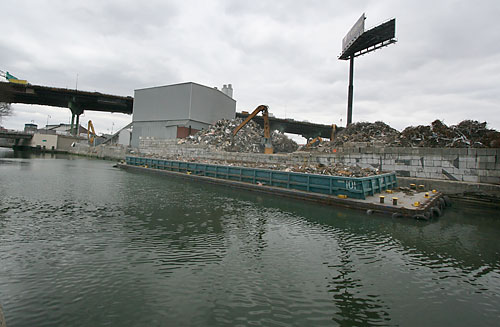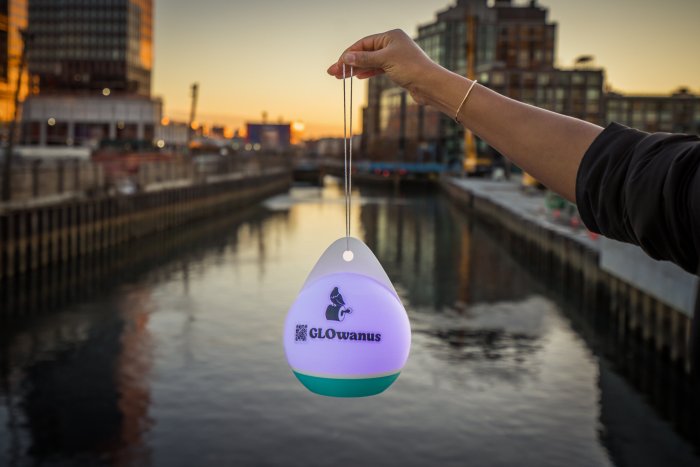Behold the sickening seven!
Seven spots along the Gowanus Canal — former gas plants, manufacturing areas, and utility sites — have been identified by the Environmental Protection Agency as the filthiest places along the poop-and-tar-tainted waterway.
The agencies “remedial investigation” of 500 samples of canal gunk found “elevated” levels of cancer-causing coal and tar sludge that scientists now warn against even touching.
And (drum roll, please…) the seven don’t-even-think-about-dipping-your-worst-enemy’s-pinky-toe-in-it locations are:
1) 270 Nevins St: a sprawling brick monolith that now bears the sign “TE Conklin Brass & Copper Company” and once housed the former Fulton Manufactured Gas Plant.
2) 160 Third St.: a boxy gray building owned by MLV Concrete, next to Foro Marble Company, which has the aesthetics of a state prison.
3) 400 Carroll St.: a graffiti-covered empty lot and former parcel that developers Toll Brothers abandoned after officials declared the canal a federal Superfund clean-up site. The property is now owned by Wooden Bridge, a limited liability company.
4) The Verizon service yard at Nevins Street: a barb-wire–lined yard that that was once a Department of Environmental Conservation spill site, near the soon-to-sprout Whole Foods.
5) The so-called “Public Place,” bounded by Fifth Street: a long-abandoned city-owned plot that’s now being developed by Hudson Companies into a park and shopping space — where an old refinery once stood.
6) The National Grid service yard at Smith and Halleck streets: forerunners of the energy giant polluted the canal so badly that National Grid is now required pay up.
7) The gravel yard at Ninth Street bounded by Second Avenue: an abandoned plot of land next to Lowe’s, where Metropolitan Manufactured Gas once stood.
Results of the EPA test — which was taken from canal sediment in order to determine the level of human risk presented by the toxic sluice — is part of the first phase of the federal Superfund clean-up, which holds companies and their successors financially responsible for decades of pollution.
The EPA will next prepare a “feasibility study,” proposing various methods for cleaning up the contamination, which it will file in late 2011. Then, the agency — barring any delays, of course — will choose a plan of attack for cleaning the Gowanus Canal in 2012.
Longtime advocates of a clean canal say the “dirty seven” list should send companies a clear message: Destroy our waterways and you’ll be held responsible.
“Everybody says he wants a clean canal,” said Gowanus resident Steve Miller. “It would be nice companies acted on it in the future.”
Some companies claim they are already.
“We’re working with the department to clean up a mess we didn’t make,” Wooden Bridge owner David Lefkowitz said.
A spokesman for Verizon added the company is also cooperating even though it is no longer polluting, either.
“The Verizon facility may be on the EPA list, but it’s not as a result of any current Verizon operations,” said the spokesman, John Bonomo.
The city, which is responsible for the so-called Public Place turf, has also agreed to fund a portion of the clean-up.
And National Grid — the biggest polluter, which is on the hook for toxins at the Metropolitan Manufactured Gas plant — has pledged to help fund the clean-up by paying to dig wells for water sampling. A company spokeswoman did not respond to calls by press time.
Neither did owners of MLV Concrete, which has made no such pledge.




















